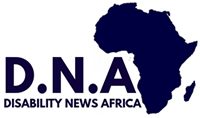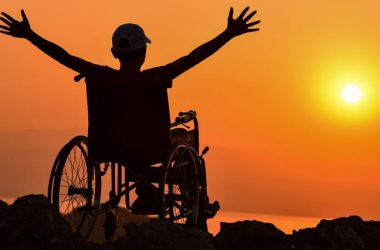I became blind at the age of five, which more or less disqualified me from for school in rural Ethiopia. I would most likely have been married off instead if my courageous mother had not intervened. She insisted on enrolling me in school and, with that, changed my life path completely. I excelled, got my degree from law school, became an avid disability and women’s rights activist at university and founded a powerful disability inclusion organization with other inclusion experts. Today, I’m blessed with a wonderful family and enjoy working with Light for the World at global and national level.
I was one of the lucky ones, unlike the 93 million children globally who are at risk of being left out of education and other fundamental rights simply because of their disability. With the 2030 Agenda for Sustainable Development, the international community pledged to achieve inclusive, quality and equitable education for all in 2030. However, as many as 32.5 million children with disabilities in low- and middle-income countries are still out of school (Education Commission 2016).
Education shapes the future of every child, teaching them to live independently and prepare for employment and social life. Even though education is a fundamental right for all human beings, the barriers hindering those with disabilities are not given enough attention. Or to put it plainly: Governments and education stakeholders are failing millions of their citizens.
The scale of discrimination against children with disabilities is not only a social injustice and a human rights travesty. It is a severe economic concern as well. An ILO study on the price of economic exclusion of persons with disabilities indicates that countries lose 3-7% of their annual GDP because of their failure to include persons with disabilities in the workforce.
Without well planned and sufficiently funded measures for an inclusive system, progression and learning are severely hampered. Very few young people with disabilities get the chance to proceed to higher education and training. The WHO found that only 5-15% of children who need assistive devices have access to them. And only 1% of learning materials are available in accessible formats for blind and partially sighted readers like me, according to a study by the World Blind Union. Consequently, enrollment rates of children with disabilities are lower, and drop-out rates are higher. The impact this will have on our societies and economies is still underestimated or even ignored.
It is therefore high time for governments and development partners to deal with this education crisis. In developing countries such as my home country, Ethiopia, and in any other world region, the most cost-effective solution for educating all is inclusive education. This means schooling all children in a supportive environment in regular schools, bringing better social, academic, health and economic outcomes than learning in segregated schools. According to UNESCO, special schools in Pakistan, for example, are 15 times more expensive per pupil than mainstream schools that include kids with disabilities.
Investing in disability inclusion in the education sector brings forward other advantages as well. Inclusion benefits not merely learners with disabilities, but causes a shift in thinking: Diversity and different learning and communication styles become a value instead of being seen as a problem.
An inclusive education project funded by my organization Light for the World in Burkina Faso is a good example. In the district of Garango in eastern Burkina Faso, we succeeded in getting children with disabilities into mainstream schools and contributing to a real transformation of the education system. The project’s strategy included awareness-raising on disability in the community, training teachers on inclusive education, adapting schools to inclusion standards, and providing medical support and rehabilitation services to children. Within six years, the number of children with disabilities in schools in the district increased from 4 to 60%, and the pilot project was then used as a model for the National Strategy of Inclusive Education.
It is also worth pointing out that inclusion in education has a strong impact on the number of girls attending school. Girls in Burkina Faso, like in many African countries, are often expected to stay at home to take care of younger siblings or siblings with disabilities. When children with disabilities are included in school in their communities, the young caretakers can resume their education as well. The enrollment of children with disabilities also has an impact on the mother’s productivity. Not having to take care of out-of-school children at home, mothers are now able to earn an income.
Promoting the inclusion of persons with disabilities in education is not only a matter of rights and social justice, but also contributes to sustainable development. We probably all agree that education is a powerful weapon in the fight against poverty and inequality, but ignoring the tens of millions of children with disabilities will definitely not let us succeed. The clock is ticking: 2030 is only 11 years away. Let us invest in those left farthest behind in education and make education for all a reality. As a human rights activist and a woman with a disability, I urge the global community – governments, organizations and businesses alike – to count our abilities over our disabilities and to invest in our shared future. Let’s transform our world to become an inclusive and just place for all.
Source: .weforum.org






